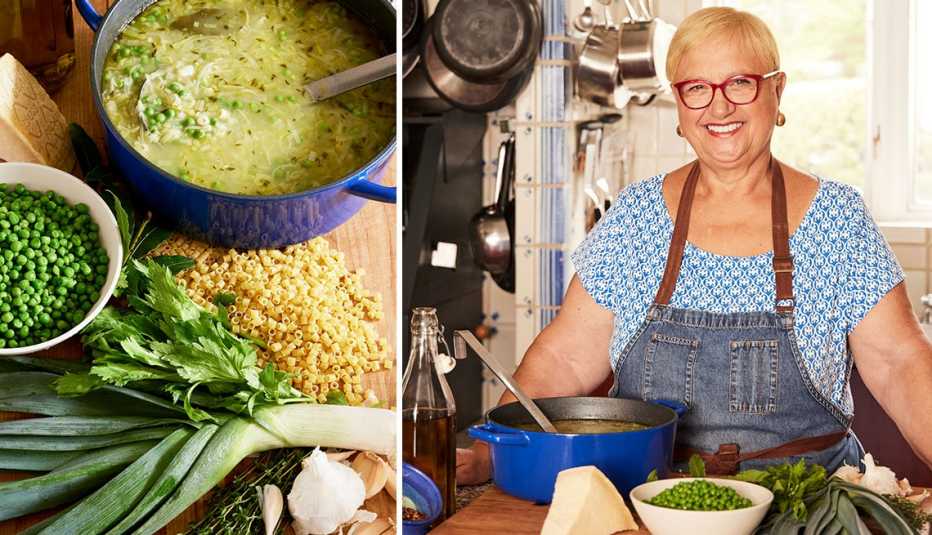Staying Fit


What’s in Lidia Bastianich’s shopping cart:
100 percent semolina dried pasta, frozen and canned fish, odd cuts of meat and a whole chicken
Renown restaurateur and cookbook author Lidia Bastianich, 76, knows how to save money on food. It’s an instinct that dates back to her youth, when stretching out the family food dollar was critical.
Today the restaurateur and television host, whose latest book is Lidia’s From Our Family Table to Yours, can afford to buy the absolute best ingredients she can find, but she still loves to save by using alternative cuts of meat, always storing leftovers— and growing whatever she can herself.


AARP Membership— $12 for your first year when you sign up for Automatic Renewal
Get instant access to members-only products and hundreds of discounts, a free second membership, and a subscription to AARP the Magazine.
Much of her savings come from shopping the internet, where the variety of foods far exceeds what’s available in your local market.
“You can find great meat, great fish — not fresh, but frozen.” She likes flash-frozen, wild-caught halibut, for example, but also buys canned sardines, tuna, anchovies and mackerel. And she searches the internet for less-expensive cuts of meat, like lamb or veal shoulder or even beef knuckles. “You can read up on which cuts of meat are best for which dishes,” she explains.


“When we came here as immigrants, my grandmother bought a lot of chicken necks, wings, even feet,” she says.
Today she’ll buy a whole chicken, remove the breasts, thighs and drumsticks, and then use the rest of the chicken for soup. Into the stock will go parsley stems, the tops of celery stalks and other pieces of plants that many of us just throw away. “Wash them, put them in a little Ziploc bag and freeze them,” she says. “Every part of the plant is usable.”
She even freezes fresh tomatoes, which can then be used for sauce or soup, or grated — still frozen — over a nice burrata or mozzarella with some olive oil. Dried beans, peas and nuts are also a staple; she’ll buy them individually in bulk, then freeze what she doesn’t need to better preserve them.
Recycling leftovers is also important to Bastianich. One of her favorite tricks is turning last night’s dinner into this morning’s breakfast. “Put some pasta Bolognese into a pan with a little oil, reheat it, then mix in some eggs, like a frittata.”
She often bakes bread from scratch but will also pick up “parcooked” breads. “They’re partially cooked. You put them in the oven and finish the cooking, and it’s like freshly baked bread,” she says.



































































More From AARP
What's in Al Roker's Shopping Cart
The 'Today' cohost lets us peek at his grocery list and tells us his favorite place to shop
Healthy Eating Doesn't Have To Be Expensive
Plenty of ways to whip inflation and eat heallthy foods, too
Staples You Should Always Buy On Sale
If they store well or freeze well, jump at the chance to buy on sale
Recommended for You